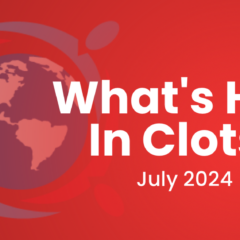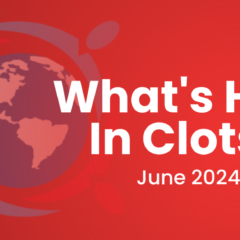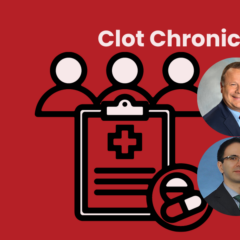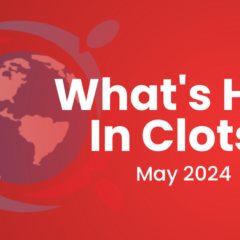Last updated on
Clot Chronicles: Catheter-Directed Therapy in Post-Thrombotic Syndrome
My name is Suresh Vedantham and I am an interventional radiologist and thrombosis researcher at Washington University in St. Louis. On this episode of Clot Chronicles, I will be discussing the treatment of chronic deep vein thrombosis (DVT) and post-thrombotic syndrome. I’ll be focusing on an important ongoing clinical trial called the C-TRACT trial, which is sponsored by the National Institutes of Health and is being conducted in 30 centers around the country.
Many patients with DVT develop post-thrombotic syndrome, which most commonly causes leg pain, swelling, and can progress to developing skin changes and venous ulcers in some people.
Maybe about 20% of patients who have had a proximal DVT ultimately develop a form of post-thrombotic syndrome that causes substantial life impact in terms of their ability to be active, their ability to work, or their health-related quality of life. Many of these people have an obstruction of the iliac vein either from residual clot or from preexisting stenosis or narrowing of the vein.
For many years, physicians have been using stents to open those veins up, and we think that we’ve seen some degree of symptom improvement in the people who have been stented over time. However, there are no high-quality studies that have really evaluated the long-term benefit- to-risk ratio for patients who have undergone stent placement in this clinical context.
So, the C-TRACT trial was designed to determine if stent placement for people who have post-thrombotic syndrome and iliac vein obstruction resulted in an improvement in the severity of post-thrombotic syndrome and in an improved quality of life.
For this study, we are seeking patients who are adults and who’ve had a DVT more than 3 months previously and who have post-thrombotic syndrome with evidence of substantial life impact, and who have some degree of iliac vein obstruction demonstrated on an imaging study.
Patients will be randomized to receive or not receive endovascular therapy with stent placement. All the patients in both treatment arms will receive quality medical therapy, which may include venoactive medications to reduce inflammation and compression therapies, and those who have venous ulcers will be managed in a professional venous ulcer clinic.
Patients will be followed for 2 years, and we’re evaluating the effect on the reduction in post-thrombotic syndrome severity using clinical measures known as the Venous Clinical Severity Score and the Villalta Scale. We’re also using health-related quality-of-life measures – we’re looking at venous ulcer healing, safety, as well as a detailed cost-effectiveness study.
Participation in this study is a terrific opportunity for patients, so I hope that you’ll consider it for yours. They get to join a program of structured, closely monitored care for post-thrombotic syndrome where the study teams communicate with them and their providers effectively. The people involved in the study, the physicians, really are experts in post-thrombotic syndrome care and are dedicated to helping people with this condition. Irrespective of whether or not people are in the stent arm, there will be active efforts to improve symptoms in all patients in the study.
All the patients receive free elastic compression stockings and wraps if they need them, they receive two free ultrasound exams, and in some centers, they also get free follow-up care and visits.
This is an opportunity to receive stent placement in a closely monitored setting with independent safety oversight, and even for the people who aren’t randomized to receive stents, if they prove to be effective down the road in the study, then they can always get stented later on again with the greater confidence from the study’s results.
From a physician’s viewpoint, we think this is a great opportunity, as well, because these people are very difficult to manage at times. We’re an experienced research group and we communicate very effectively with providers, and we’re adopting many practices in the study that enable remote contact in the context of the COVID pandemic right now.
So, to help this important study, we hope that you’ll refer your patients. There are different ways to go about that. You can go to the C-TRACT study website for more information, or you can contact me directly. And please help us spread the word to other physician groups, as well. We really want to make sure that this study succeeds so that people get evidence-based treatment.
Thank you very much.



